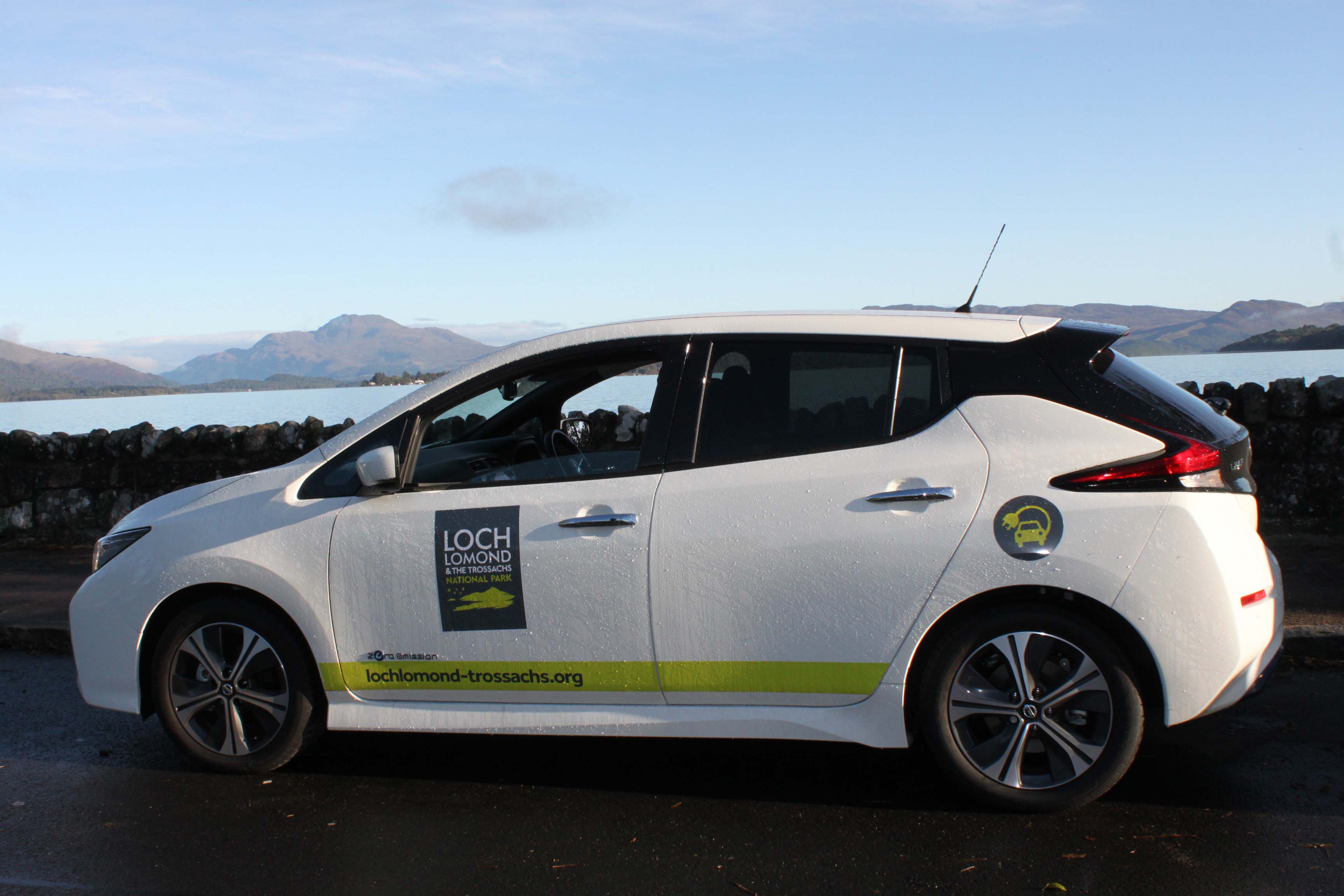
If we invest in nature now, it will look after us forever
As part of #ScotClimateWeek, Simon Jones, our Director of Conservation & Visitor Operations blogs on why nature must be at the heart of our efforts to combat the global climate emergency.
Loch Lomond & The Trossachs National Park is more than just a beautiful place to visit. It contains vital natural tools we can use to tackle the global climate emergency and now nature conservation’s time has come. If we invest in nature now, it will look after us forever.
Forests, peatlands and water are the big ones. These are the things that can soak up carbon, not just now but if looked after they will continue to do so for generations.
Around 30% of the National Park (52,300ha) is covered with trees. 1ha is roughly the size of an international rugby pitch, so that’s over 50,000 rugby pitches.

These trees hold approximately 2.5 million tonnes of carbon, making our woodlands a fantastic resource in the fight against climate change. And there’s room for more. We work closely with landowners and are developing our new Trees and Woodland Strategy that will guide how woodlands and forests are planted and maintained in the National Park for the next twenty years. This will not only help make the National Park, and Scotland, more climate resilient but it will bring many other benefits such as biodiversity and providing a home for more native species so it’s a win-win for climate and nature.
 Peatlands are the Cinderella story of climate change. To most people they’re not beautiful or majestic to look at but they are the often unsung hero. The peatlands of the National Park hold an estimated 20 million tonnes of carbon – nearly 10 times the amount held by the extensive forests and woodlands of the area and about 4% of the Scottish total.
Peatlands are the Cinderella story of climate change. To most people they’re not beautiful or majestic to look at but they are the often unsung hero. The peatlands of the National Park hold an estimated 20 million tonnes of carbon – nearly 10 times the amount held by the extensive forests and woodlands of the area and about 4% of the Scottish total.
Keeping peatlands healthy is important because if they are damaged, they release greenhouse gases, including carbon back in to the atmosphere. Therefore repairing damaged peatlands is crucial work in fighting climate change as they help fight both the causes and effects of climate change. As well as storing carbon they store and slowly release water helping to reduce flood risks. Basically they act like giant, upland sponges.
Through our partnership with Peatland Action and working with landowners we’re aiming to restore 2000ha of peatland by 2023 – that’s equivalent to about 2000 rugby pitches (or 810 football pitches if you prefer).
The value of ‘blue carbon’ is also being recognised more and more too. The plant communities on Scotland’s coasts hold vast amounts of carbon and we have sea lochs in the National Park that we know are important to protect, both to store carbon but to make sure they are resilient to climate change.
We have areas of the National Park which are particularly vulnerable to flooding and with the changing climate, these threats are increasing. For example we’ve seen incidents of heavy rainfall causing flooding or landslips within the National Park this summer and we can expect these to continue to occur more often due to the warmer, wetter weather. We support communities and landowners to develop natural solutions to make them more resilient to these risks.
Of course, at the same time we have to be mindful of the fact that the National Park is a place that emits a huge amount of carbon through the volume of visitors travelling to, from and through the area by petrol and diesel vehicles.
That’s a huge challenge, but as an organisation we don’t shy away from encouraging responsible visitor behaviour when it has a significant impact on the environment. And it’s not just about the climate, the increasing number of vehicles has an impact on roads, local communities and the visitor experience.

But making a shift to fewer car journeys is a long road. While we encourage people to use more sustainable ways to travel such as public transport or choosing active travel like cycling, we know that the options need to be available for people to make those positive choices. Working with partners to improve infrastructure and public transport links as well as providing the right information and access to active travel options will be a key part of our work in the next few years.

And it’s not just about telling others what they can do, as a public body we have a responsibility to lead by example and be a climate ready organisation. We’re doing that by reducing our carbon footprint and waste levels. For example we have so far switched 25% of our vehicle fleet to being electric or hybrid, replaced old inefficient lighting with LED bulbs, use renewable heat sources and engaging our workforce in ways they can help tackle climate change both at work and at home.
We don’t have all the answers but we do have many tools at our fingertips (or in some cases under our feet) to tackle the global climate emergency. Now is the time and the National Park as a place and an organisation is ideally placed to be at the forefront of taking on this challenge. But we can’t do it alone. Together everyone can and must help fight climate change.
#ScotClimateWeek: Scotland’s Climate Week 2019 takes place from Monday 7th to Sunday 13th October. Together, we can do more to tackle the climate emergency and save our planet.
Follow @lomondtrossachs and #ScotClimateWeek on Twitter for more updates on how we are helping tackle the global climate emergency, and what you can do to help.

